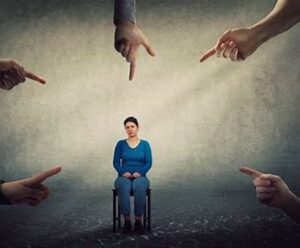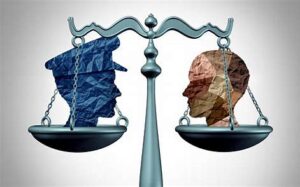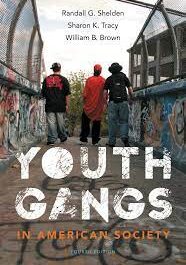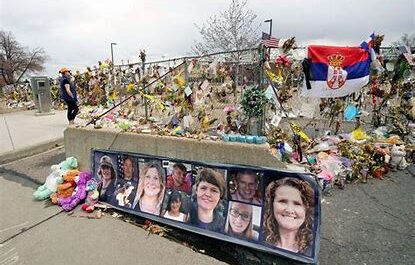Abstract:
Crime and media have a complex and intertwined relationship, influencing societal perceptions, public discourse, and criminal justice policies. This essay provides a comprehensive examination of the intersection of crime and media, exploring the ways in which media representations shape perceptions of crime, the impacts of sensationalism and moral panics, and the ethical considerations inherent in media coverage of criminal events. Drawing on insights from communication studies, criminology, and sociology, the essay delves into various aspects of the relationship between crime and media, including the role of news media, fictional portrayals of crime in popular culture, and emerging trends in digital media. Furthermore, the essay discusses the challenges of responsible reporting, the phenomenon of “true crime” entertainment, and the implications of media coverage for public understanding and engagement with criminal justice issues. By shedding light on the complexities of crime and media, this essay aims to deepen understanding and foster critical discourse on the role of media in shaping perceptions of crime and justice.

I. Introduction:
Crime and media are two interconnected and influential forces that shape public perceptions, attitudes, and responses to criminal behavior. The relationship between crime and media is complex and multifaceted, with media playing a significant role in shaping public discourse, informing policy debates, and influencing public perceptions of crime and justice. This essay provides an in-depth examination of the intersection of crime and media, exploring the ways in which media representations of crime influence public perceptions, the impacts of sensationalism and moral panics, and the ethical considerations inherent in media coverage of criminal events.
II. The Role of News Media in Crime Reporting:
The news media plays a central role in shaping public perceptions of crime through its coverage of criminal events, investigations, and legal proceedings. News media outlets rely on crime reporting as a staple of their coverage, often prioritizing sensational or high-profile cases that capture public attention. The portrayal of crime in the news media can influence public perceptions of crime rates, trends, and patterns, shaping attitudes toward law enforcement, criminal justice policies, and societal responses to crime. However, news media coverage of crime can also perpetuate stereotypes, biases, and misconceptions about offenders, victims, and criminal justice systems, leading to distorted perceptions of reality and misinformed public discourse.
III. Sensationalism, Moral Panics, and Crime Coverage:

Sensationalism and moral panics are common features of media coverage of crime, characterized by exaggerated or sensationalized reporting of criminal events, often for the purpose of attracting viewership or readership. Sensationalist crime coverage tends to focus on rare, extreme, or salacious cases, such as violent crimes, sex offenses, or celebrity scandals, while downplaying or ignoring more mundane forms of criminal activity. Moral panics occur when the news media and public officials exaggerate the threat posed by a particular type of crime or social problem, leading to widespread fear, anxiety, and calls for punitive responses. Examples of moral panics include the “crack epidemic” of the 1980s, the “superpredator” scare of the 1990s, and the contemporary panic over mass shootings and terrorism.
IV. Fictional Portrayals of Crime in Popular Culture:
Fictional portrayals of crime in popular culture, including film, television, literature, and video games, play a significant role in shaping public perceptions of crime, criminals, and criminal justice systems. Crime dramas, police procedurals, and courtroom thrillers are among the most popular genres in film and television, offering audiences a glimpse into the world of crime, investigation, and justice. While fictional portrayals of crime can entertain and engage audiences, they can also perpetuate stereotypes, glamorize violence, and reinforce misconceptions about crime and justice. Moreover, fictional portrayals of crime often prioritize entertainment value over accuracy, realism, or ethical considerations, leading to distorted perceptions of criminal behavior and law enforcement practices.

V. Emerging Trends in Digital Media and Crime:
The advent of digital media has revolutionized the landscape of crime reporting and criminal justice communication, enabling instant access to news, information, and social commentary on crime-related issues. Social media platforms, online news websites, and mobile applications have become increasingly important sources of crime news and information, allowing users to share, comment on, and interact with content in real-time. However, digital media also presents new challenges and risks for responsible reporting, including the spread of misinformation, the amplification of sensationalism, and the erosion of traditional journalistic standards. Moreover, digital media platforms can be exploited by criminals to disseminate propaganda, recruit followers, and glorify criminal behavior, posing challenges for law enforcement agencies and policymakers.
VI. Challenges of Responsible Reporting:
Responsible reporting of crime requires journalists and media organizations to adhere to ethical standards, journalistic principles, and professional norms in their coverage of criminal events. However, responsible reporting can be challenging in the context of competitive pressures, deadlines, and commercial imperatives that shape newsroom practices. Journalists may face ethical dilemmas when balancing the public’s right to know with the need to minimize harm, protect privacy, and avoid sensationalism. Moreover, journalists may encounter resistance from law enforcement agencies, government officials, and corporate interests when seeking access to information, sources, and records related to criminal investigations. Despite these challenges, responsible reporting of crime is essential for fostering informed public discourse, promoting transparency and accountability, and upholding the integrity of the news media.

VII. The Phenomenon of “True Crime” Entertainment:
The “true crime” genre has experienced a surge in popularity in recent years, fueled by the success of podcasts, documentaries, docuseries, and books that explore real-life criminal cases, investigations, and legal proceedings. True crime entertainment offers audiences a voyeuristic glimpse into the world of crime and justice, often focusing on high-profile or unsolved cases that captivate public interest. While true crime entertainment can educate and inform audiences about criminal behavior, investigative techniques, and legal proceedings, it can also sensationalize violence, exploit victims, and perpetuate stereotypes about crime and criminals. Moreover, true crime entertainment blurs the line between journalism and entertainment, raising ethical questions about the responsibilities of media producers, the treatment of victims, and the impact on public perceptions of crime and justice.
VIII. Ethical Considerations in Media Coverage of Crime:
Media coverage of crime raises ethical considerations related to accuracy, fairness, privacy, and sensitivity to victims and their families. Journalists and media organizations have a responsibility to report crime news accurately, objectively, and with sensitivity to the potential impact on victims, suspects, and communities. Ethical reporting of crime requires journalists to verify information, corroborate sources, and provide context and perspective to help audiences understand the complexities of criminal behavior and its broader social, economic, and cultural dimensions. Moreover, journalists should avoid sensationalism, exploitation, and victim-blaming in their coverage of crime, respecting the dignity, rights, and privacy of individuals affected by criminal events.
IX. Impacts of Media Representations on Public Perception:
Media representations of crime can have significant impacts on public perceptions, attitudes, and behaviors, shaping individual beliefs, societal norms, and policy responses to criminal behavior. Research suggests that media portrayals of crime often emphasize violent or sensational cases, leading audiences to overestimate the prevalence of crime and perceive the world as more dangerous than it actually is. Moreover, media representations of crime can influence public attitudes toward law enforcement, criminal justice policies, and social issues such as immigration, mental health, and substance abuse. For example, biased or stereotypical media coverage of certain groups or communities can contribute to stigma, discrimination, and social marginalization, exacerbating inequalities and injustices in the criminal justice system.
X. Media and Criminal Justice Policy:
Media coverage of crime can influence public opinion and political discourse, shaping the development and implementation of criminal justice policies and practices. Politicians and policymakers often respond to public concerns about crime by proposing and enacting tough-on-crime laws, sentencing enhancements, and other punitive measures, often in response to media-driven moral panics or public outrage. However, media-driven policy responses to crime may be based on misinformation, fear-mongering, or political opportunism, rather than evidence-based research, best practices, or principles of justice. Moreover, media coverage of crime can influence public perceptions of law enforcement agencies, criminal justice institutions, and the effectiveness of crime prevention and intervention strategies, shaping public support for reforms, accountability measures, and community engagement initiatives.

XI. Conclusion:
Crime and media are two powerful and interconnected forces that shape public perceptions, attitudes, and responses to criminal behavior. The relationship between crime and media is complex and multifaceted, with media representations of crime influencing public discourse, political debates, and criminal justice policies. While media coverage of crime plays a crucial role in informing the public and holding institutions accountable, it also presents challenges and risks, including sensationalism, bias, and ethical dilemmas. Responsible reporting of crime requires journalists and media organizations to adhere to ethical standards, journalistic principles, and professional norms, ensuring accuracy, fairness, and sensitivity in their coverage of criminal events. By fostering informed public discourse and promoting transparency and accountability in the criminal justice system, media can contribute to a more just, equitable, and informed society.



